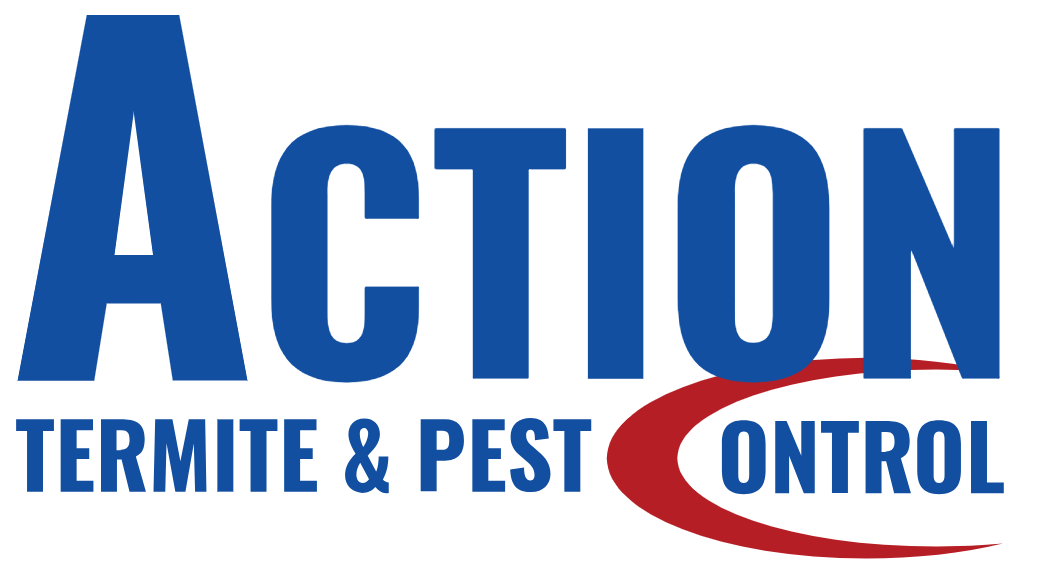Bed bugs are pesky invaders that cause endless frustration and discomfort. If you’ve ever encountered them, you likely wonder how they get into your home and how you can prevent them from returning. The first step in preventing bed bug infestations is to understand their root cause.
In this article, we will delve into the main question on everyone’s mind: what exactly is the leading cause of bed bugs? We will explore the origins of bed bug infestations, common hotspots, and spreading factors to equip you with the necessary tools to prevent and combat these persistent pests effectively.
Key Takeaways
- Understanding the root cause of bed bugs is crucial for prevention and protection against these pests.
- Origins of bed bug infestations include transportation methods, shared spaces, and unsuspecting dwellings that act as breeding grounds.
- Factors contributing to bed bug spreading include increased travel and poor hygiene practices.
- Understanding bed bug behavior and habits is critical to identifying their infestations.
- Common bed bug hotspots include hotels, public transportation, second-hand furniture, and clothing.
Identifying the Culprit: Bed Bug Infestation Origins
To determine the number one cause of bed bugs, it is essential to explore their infestation origins. Bed bugs are notorious hitchhikers and can travel long distances to reach their desired destinations. Some of the most common sources of bed bug infestations include:
- Shared spaces: Bed bugs can quickly infest common areas, such as schools, offices, and hospitals, through human interaction or shared belongings.
- Transportation methods: Public transportation, such as buses, trains, and taxis, can harbor bed bugs that hitch a ride on unsuspecting passengers.
- Used furniture: Second-hand furniture, especially beds, couches, and mattresses, can hold bed bugs that quickly spread throughout your home.
Bed bugs are also adept at finding new hiding spots, such as cracks in walls and furniture, behind picture frames, and in electrical outlets. They often lay dormant until their next meal, usually a human host, is nearby.
Avoiding bed bugs can be challenging, but there are steps you can take to minimize the risk of infestation. Always inspect used furniture before bringing it home, avoid placing your belongings on shared surfaces, and keep your living spaces clutter-free to reduce potential hiding spots.
| Fact | Statistic |
|---|---|
| Bed bugs are excellent hitchhikers. | Bed bugs can travel nearly 100 feet in a single night to reach their desired host. |
| Bed bugs can lay dormant for long periods. | Bed bugs can survive up to a year without feeding, making them difficult to eradicate. |
| Bed bugs are not selective eaters. | Bed bugs feed on any warm-blooded animal, including humans, cats, and dogs. |
Factors Contributing to Bed Bug Spreading
Understanding the factors that contribute to bed bug spreading is essential in preventing and controlling infestations. By taking proactive measures, you can protect yourself and your home from these persistent pests.
- Increased Travel: The rise of global travel has led to a significant uptick in bed bug infestations. Bed bugs often latch onto luggage and clothing, allowing them to travel from one location to another with ease. When staying in a hotel or rental property, inspecting the room for bed bugs before settling in is crucial.
- Poor Hygiene: Clutter and unsanitary conditions can lead to bed bug infestations. Bed bugs thrive in areas with a high concentration of human activity, so keeping your home clean and clutter-free can go a long way in preventing infestations.
- Second-Hand Items: Purchasing used furniture or clothing can introduce bed bugs into your home. Always inspect second-hand items before bringing them indoors. If possible, consider purchasing new items instead.
- Close Quarters: Bed bugs are often found in locations with high turnover rates, such as apartments and dormitories. If you live in close quarters with others, it’s essential to be vigilant in preventing and identifying bed bug infestations.
- Delayed Treatment: Delaying treatment of a bed bug infestation can lead to further spreading and a more challenging extermination process. If you suspect you have bed bugs in your home, seek treatment immediately.
By understanding these contributing factors, you can take the necessary steps to prevent bed bug infestations and protect your home. Stay vigilant and informed, and don’t hesitate to seek professional help if needed.
Understanding Bed Bug Behavior and Habits
To identify the primary cause of bed bug infestations, it’s crucial to understand these pests’ behavior and habits.
Bed bugs are nocturnal and feed on human blood, primarily at night. They are attracted to warmth and carbon dioxide, making your bed an ideal spot for them to feed. However, they can also hide in cracks and crevices near your bed, including furniture, baseboards, and electrical outlets.
Bed bug females can lay up to five eggs per day, and they can live up to six months without feeding. This makes it easy for an infestation to spread quickly and become challenging to control.
It’s also important to note that bed bugs can hitchhike on clothing, luggage, and other personal belongings, making them challenging to prevent and control.
Therefore, to prevent a bed bug infestation, it’s crucial to keep your home clean and clutter-free, vacuum regularly, and inspect second-hand furniture and clothing before bringing them into your home. Additionally, be cautious when traveling and inspect your hotel room for signs of bed bugs.
If you suspect a bed bug infestation in your home, it’s essential to take action immediately. Contact a professional pest control service to effectively eliminate the problem and prevent it from spreading further.
Identifying Common Bed Bug Hotspots
Bed bugs are notorious for their ability to thrive in a variety of settings. Knowing where to look for these pests is critical to identify infestations early on. Here are some common hotspots:
| Location | Description |
|---|---|
| Hotels and Motels | Bed bugs can hitch a ride in your luggage and make their way into your room. Check the mattress and headboard for signs of bed bugs. |
| Public Transportation | Bed bugs can infest buses, trains, and taxis. Be aware of your surroundings and check your clothing and bags after traveling. |
| Second-hand Furniture | Bed bugs love to hide in used furniture, especially upholstered pieces. Inspect any used furniture before bringing it into your home. |
| Clothing and Luggage | Bed bugs can cling to fabric, making your clothing and luggage potential carriers. Wash clothing in hot water and dry on high heat. |
Other areas where bed bugs can thrive include movie theaters, libraries, and offices. Once bed bugs are introduced to a space, they can quickly spread and establish themselves. It’s important to be vigilant and take preventative measures to avoid bringing bed bugs into your home.
Preventing Bed Bug Infestations: Strategies and Best Practices
To prevent bed bug infestations, you need to adopt proactive measures and implement best practices. Here are some effective strategies:
- Keep your home clean and clutter-free: Bed bugs can hide in piles of clothes, books, and other clutter. Regularly cleaning your home, vacuuming carpets, and washing your bedding can help eliminate bed bugs and their eggs.
- Inspect used furniture: Before buying used furniture, inspect it thoroughly for any signs of bed bugs. Check the seams, cracks, and crevices for any droppings or bloodstains.
- Be cautious when traveling: Bed bugs can hitchhike on your luggage, clothes, and other belongings. Always inspect your hotel room before unpacking and keep your luggage off the floor or bed.
- Encase your mattress: Bed bugs can’t penetrate encasements designed to protect your mattress and box spring. These covers trap any bed bugs inside and prevent them from feeding or breeding.
- Use bed bug interceptors: These devices are placed under the legs of your bed to trap bed bugs and prevent them from climbing onto your mattress.
By adopting these strategies and practices, you can significantly reduce the risk of bed bug infestations in your home.
Taking Action: Bed Bug Treatment and Extermination
Your diligent efforts to prevent bed bugs may still result in an infestation. In such cases, quick detection and treatment are vital to preventing a full-blown infestation. Here are some effective ways to get rid of bed bugs:
DIY Methods
DIY treatments may be effective in eradicating small infestations. Some popular DIY methods include:
- Vacuuming: Regular vacuuming can help remove bed bugs and their eggs from surfaces and fabric
- Heat: Bed bugs cannot survive high temperatures. You can use a steamer or dryer to kill bed bugs in linens and clothing
- Encasements: Encasing your mattress and box springs in a protective cover can prevent bed bugs from reaching you and eventually starve
However, remember that DIY methods may not always be successful and can even make matters worse if not done correctly.
Professional Extermination
Professional bed bug extermination services are the most reliable way of getting rid of bed bugs. Experienced professionals use a combination of treatment methods to ensure complete eradication.
The most common professional bed bug treatments include:
| Treatment Type | Description |
|---|---|
| Chemical Treatment | Application of pesticides to infested areas |
| Heat Treatment | Use of specialized equipment to heat infested areas to lethal temperatures |
| Fumigation | Use of gas to suffocate bed bugs |
Professional extermination services may come at a higher cost, but they guarantee complete eradication of bed bugs.
No matter which treatment method you choose, it is crucial to follow up with regular inspections to ensure that all bed bugs have been eliminated.
Conclusion
By understanding the causes and habits of bed bugs, you can take the necessary precautions to protect your home and prevent infestations. Regular inspections, proper hygiene practices, and protective measures such as mattress covers and sealing cracks and crevices can create an inhospitable environment for these pests. If you do find yourself facing a bed bug infestation, swift action is essential. DIY measures such as vacuuming and steaming can provide temporary relief, but professional extermination services are often necessary to fully eradicate the problem.
Remember, prevention is key when it comes to bed bugs. Stay vigilant and informed, and don’t hesitate to take action at the first sign of an infestation. With the right strategies and practices in place, you can defend yourself and your home against these persistent pests.
FAQ
What is the number one cause of bed bugs?
The number one cause of bed bugs is typically brought into homes through infested furniture, luggage, or clothing. They can also be found in shared spaces such as hotels, dormitories, and public transportation.
How do bed bug infestations start?
Bed bug infestations can start when an individual unknowingly brings them into their home through infested items. Additionally, they can be introduced through shared spaces such as hotels or public transportation where bed bugs are already present.
What factors contribute to the spread of bed bugs?
Factors contributing to the spread of bed bugs include increased travel, lack of awareness and preventative measures, poor hygiene practices, and the transfer of infested items from one location to another.
What are the behavior and habits of bed bugs?
Bed bugs are nocturnal creatures that feed on human blood. They hide in cracks and crevices during the day and emerge at night to feed. They can live for several months without a blood meal, making them difficult to eradicate.
Where are common bed bug hotspots?
Common bed bug hotspots include hotels, motels, dormitories, apartments, public transportation, second-hand furniture and clothing stores, and areas with high turnover of people.
How can I prevent bed bug infestations?
To prevent bed bug infestations, it is important to regularly inspect your living spaces and luggage, avoid bringing used furniture or clothing into your home without proper inspection, and practice good hygiene habits. Using protective measures such as mattress encasements and avoiding contact with infested areas can also help prevent infestations.
How can I treat and exterminate bed bugs?
Treatment and extermination of bed bugs can be done through both DIY approaches and professional services. DIY methods include washing infested items with hot water, vacuuming thoroughly, and using bed bug sprays or powders. Professional services may involve heat treatments or chemical treatments performed by trained professionals.

 BED BUGS
BED BUGS SCORPIONS
SCORPIONS RODENTS
RODENTS BEES
BEES MOSQUITOS
MOSQUITOS TAP INSULATION
TAP INSULATION PEST PROTECTION PLAN
PEST PROTECTION PLAN WEEDS
WEEDS


